
For a busy family, throwing a seasoned roast into the oven is a perfect option for a tasty, nutritious meal that takes little prep time, and you need to watch it only occasionally. The two different types of roasting -- dry heat and moist heat -- can accommodate whatever schedule you have. Cover and add liquid to the roast when in a hurry, or leave it uncovered with no moisture and cook for a long time on a slow, lazy day.
Dry Heat
Roasting using dry heat is one method of cooking a pork roast. It does not require that you add liquid, or that you cover it. It does require, however, that you roast it at a lower temperature than roasting using moist heat. You can do this by roasting, broiling, or barbecuing. For thinner cuts, such as steaks or chops, only use the broiling method, which requires intense heat for a short period. This allows the cut to brown on the outside but not to overcook inside, because of the shortened cooking time.
Moist Heat
If you add a small amount of liquid to a baking dish and cover a pork roast, this results in steaming the meat. Also labeled as braising or pot-roasting, you can brown the meat first to deepen the flavor, and then add the meat to a large roasting pan, with lid, and a small amount of liquid. This can range from a simple stock to a homemade barbecue sauce. You can also add fruits and vegetables around the roast, so that they add their own moisture as well as flavor.
Cooking
When using dry heat, cook slowly and for a long time to ensure the most tender roast. For large roasts over 2 pounds, roast at 325 degrees Fahrenheit and for small roasts under 2 pounds, roast at 350 F. Because you have added liquid, this moist heat typically means that you can cook it for a shorter time and at a higher heat, without losing any of the moisture in the cut. Bake at 375 to 400 F, cooking for 1 hour per pound of meat. Cook with either method until a meat thermometer inserted into the middle reads 160 F.
Considerations
If using dry heat to cook, add more water to the meat before you insert the meat into the oven This process is called brining, and it allows the meat to retain its moisture during heating, working in much the same way as covering the roast and adding liquid. Create a brine by using a ratio of one part salt for every 13 parts water. You can store a covered pork roast with liquid in the fridge for up to two days, with your fridge set to 40 F or below.
Related Articles

How to Cook Beef Top Round Pot Roast
How to Slow Cook a Pot Roast With Beef ...

What Are the Temperatures for Slowly ...
How to Cook Pre-Seasoned Porketta

Pot Roast Cooking Temp
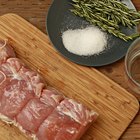
How to Brine Pork Roast

How to Do Corned Pork
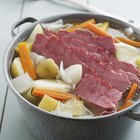
How to Cook a Large Amount of Corned ...
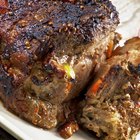
Barbecue Tips for Pork Rib Brisket

Reheating a BBQ Pork Shoulder
How to Cook a Choice Chuck Roast
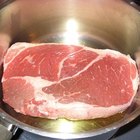
How to Cook a Tender Roast
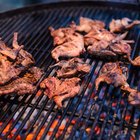
How to Cook a Partridge

How to Cook Turkey Legs on the Grill

How to Heat Pre-Cooked Hams
Can You Slow-Cook a Brined Pork?
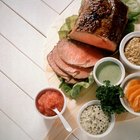
How to Sear a Roast Beef
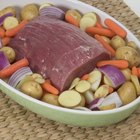
How to Make Bottom Round Roast Melt in ...
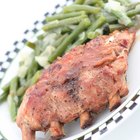
How to BBQ Ribs on a Smoker

How to Cook a Moist & Tender Center Cut ...
References
Writer Bio
Based in Kingston, Canada, Samantha Lowe has been writing for publication since 2006. She has written articles for the "Mars' Hill" newspaper and copy for various design projects. Her design and copy for the "Mars' Hill" won the Associated Collegiate Press Pacemaker award in 2008. Lowe holds an Honors BA from Trinity Western University, and a MSc in Occupational Therapy from Queen's University where she is currently doing her PhD.
Photo Credits
Jupiterimages/Photos.com/Getty Images